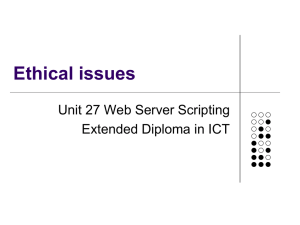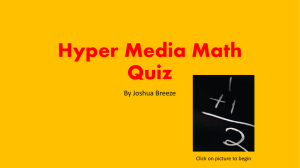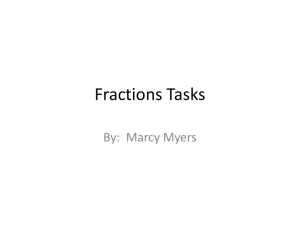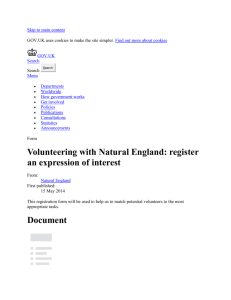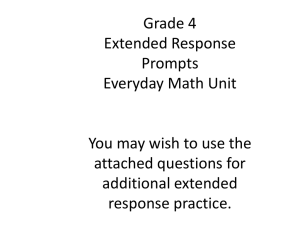New York Times
advertisement
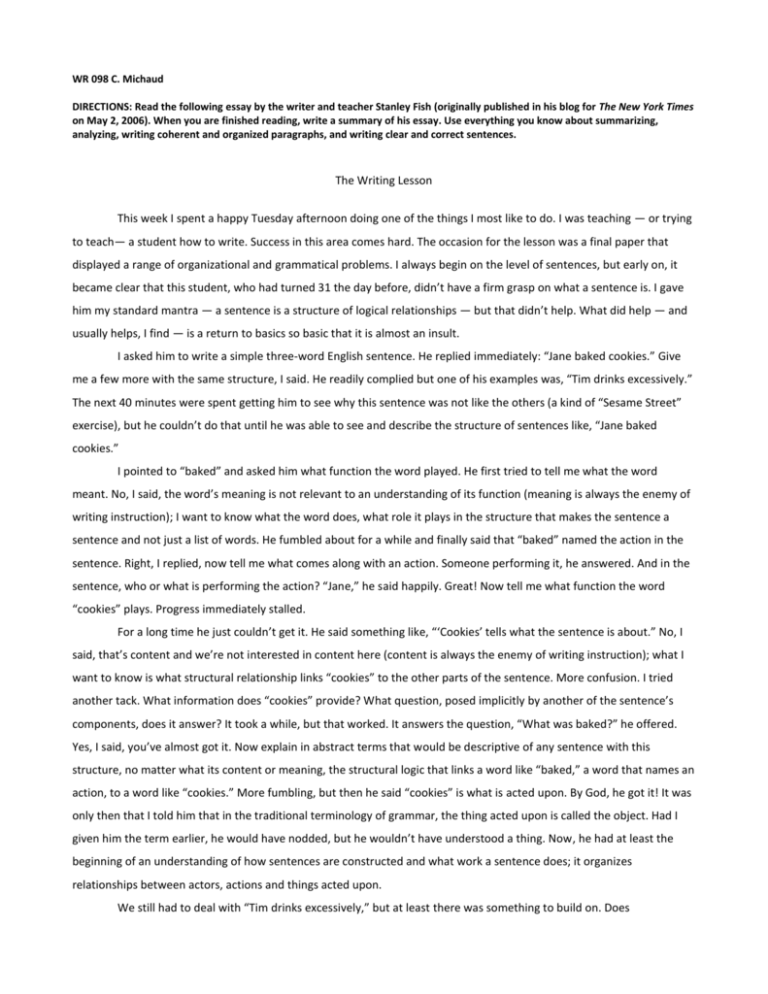
WR 098 C. Michaud DIRECTIONS: Read the following essay by the writer and teacher Stanley Fish (originally published in his blog for The New York Times on May 2, 2006). When you are finished reading, write a summary of his essay. Use everything you know about summarizing, analyzing, writing coherent and organized paragraphs, and writing clear and correct sentences. The Writing Lesson This week I spent a happy Tuesday afternoon doing one of the things I most like to do. I was teaching — or trying to teach— a student how to write. Success in this area comes hard. The occasion for the lesson was a final paper that displayed a range of organizational and grammatical problems. I always begin on the level of sentences, but early on, it became clear that this student, who had turned 31 the day before, didn’t have a firm grasp on what a sentence is. I gave him my standard mantra — a sentence is a structure of logical relationships — but that didn’t help. What did help — and usually helps, I find — is a return to basics so basic that it is almost an insult. I asked him to write a simple three-word English sentence. He replied immediately: “Jane baked cookies.” Give me a few more with the same structure, I said. He readily complied but one of his examples was, “Tim drinks excessively.” The next 40 minutes were spent getting him to see why this sentence was not like the others (a kind of “Sesame Street” exercise), but he couldn’t do that until he was able to see and describe the structure of sentences like, “Jane baked cookies.” I pointed to “baked” and asked him what function the word played. He first tried to tell me what the word meant. No, I said, the word’s meaning is not relevant to an understanding of its function (meaning is always the enemy of writing instruction); I want to know what the word does, what role it plays in the structure that makes the sentence a sentence and not just a list of words. He fumbled about for a while and finally said that “baked” named the action in the sentence. Right, I replied, now tell me what comes along with an action. Someone performing it, he answered. And in the sentence, who or what is performing the action? “Jane,” he said happily. Great! Now tell me what function the word “cookies” plays. Progress immediately stalled. For a long time he just couldn’t get it. He said something like, “‘Cookies’ tells what the sentence is about.” No, I said, that’s content and we’re not interested in content here (content is always the enemy of writing instruction); what I want to know is what structural relationship links “cookies” to the other parts of the sentence. More confusion. I tried another tack. What information does “cookies” provide? What question, posed implicitly by another of the sentence’s components, does it answer? It took a while, but that worked. It answers the question, “What was baked?” he offered. Yes, I said, you’ve almost got it. Now explain in abstract terms that would be descriptive of any sentence with this structure, no matter what its content or meaning, the structural logic that links a word like “baked,” a word that names an action, to a word like “cookies.” More fumbling, but then he said “cookies” is what is acted upon. By God, he got it! It was only then that I told him that in the traditional terminology of grammar, the thing acted upon is called the object. Had I given him the term earlier, he would have nodded, but he wouldn’t have understood a thing. Now, he had at least the beginning of an understanding of how sentences are constructed and what work a sentence does; it organizes relationships between actors, actions and things acted upon. We still had to deal with “Tim drinks excessively,” but at least there was something to build on. Does “excessively” name what is acted upon by the action “drinks”? No, he replied. What, then does it do? A relapse into content: It tells what’s happening. That’s what “drinks” does, I reminded him. What information, in relation to “drinks” as a word with a specific function, does “excessively” provide? It was coming more quickly now. It tells us in what way he drinks, he said. Yes, the function of “excessively,” and of any other word occupying the same structural slot, is to tell you something about the manner in which an action is performed. Oh, he said, an adjective. No, an adverb, I replied, but the term is less important than your understanding of the structural role. Does that mean, he asked, that the adverbial role can be played by more than one word, by many words? Now we were rolling. I drove home the point of the lesson so far by asking him two simple questions. How many sentences, with different contents, are there that display the structures actor-action-acted upon or actor-action-manner of action? An infinite number, he replied. How many forms of the two structures are there? Only one, he said. Now you know, I told him, that form comes first, content second. If you grasp the abstract structural form of sentences like these, you can produce millions of them; you can organize any content whatsoever by imposing on it the logic of these forms. Before he left, however, I gave him an assignment. Take “Jane baked cookies” or some other sentence of the same structure and build it up and out into a sentence of at least 100 words without losing control of the sentence’s basic structure. That is, you should be able to describe the relationship between the words and phrases you add and the sentence’s core structural logic, a logic your additions and elaborations must honor and preserve. The hard part will not be doing it, but explaining to me and to yourself exactly what you did — explaining, that is, the functional role of everything you add. The next day I spoke with him on the phone, and he told me that he woke up in the middle of the night and began to work on producing the baggy monster sentence I had requested. Moreover, he said, he was excited and happy to be doing so even though it was anything but easy. Happy birthday! The large point I want to make is a point I tried to make in a New York Times Op-Ed piece of last year: The focus of writing instruction should be form, and only form. The moment an idea or piece of content is allowed to take center stage (except as an illustration of an abstract formal operation) is the moment when the game is lost. Some readers of that Op-Ed piece were properly skeptical and feared that I was urging a series of arid exercises that could not possibly engage the interest of any student. I have not found this to be true. There is nothing arid about this way of teaching writing, although I acknowledge once again that the question of whether or not it actually does teach writing remains open. It should be noted that none of the more substantive, content-based approaches to the task seem to teach writing at all. We’ve now had decades of composition courses in which students exchange banal opinions about the hot-button issues of the day, and student writing has only gotten worse. Doesn’t it make sense to think that if you are trying to teach them how to use linguistic forms, linguistic forms are what you should be teaching? If you are told to read an essay and summarize it, which of the following things a student might do are acceptable (okay) when preparing this assignment and which are unacceptable (not okay)? Why? Mark each one. 1) _____ Use a complete sentence from the text in his/her summary because it sounds right. 2) _____ Use a complete sentence from the text in his/her summary to express respect for the author. 3) _____ Include biographical information about the author in his/her summary. 4) _____ Look at a friend’s summary and then change his/her own summary because it was wrong. 5) _____ Have a roommate or friend correct the grammar in his/her summary. 6) _____ Email the instructor the entire summary and ask for feedback. 7) _____ Read online articles about the author or other essays students have written on this text. 8) _____ Use just a few words from the text in his/her summary because there’s no other way to say it. Plagiarism or paraphrase? 1) Stanley Fish writes about a happy Tuesday afternoon when he taught a student more about sentence structure. 2) Fish asked the student to write a three-word sentence. 3) When the student began to understand the structural relationships that connect the different words in a sentence, Fish and the student were finally rolling. 4) The large point Fish wants to make in this essay is a point he tried to make in a New York Times Op-Ed piece last year. 5) Fish notes that many people over the years have been properly skeptical of his views.

